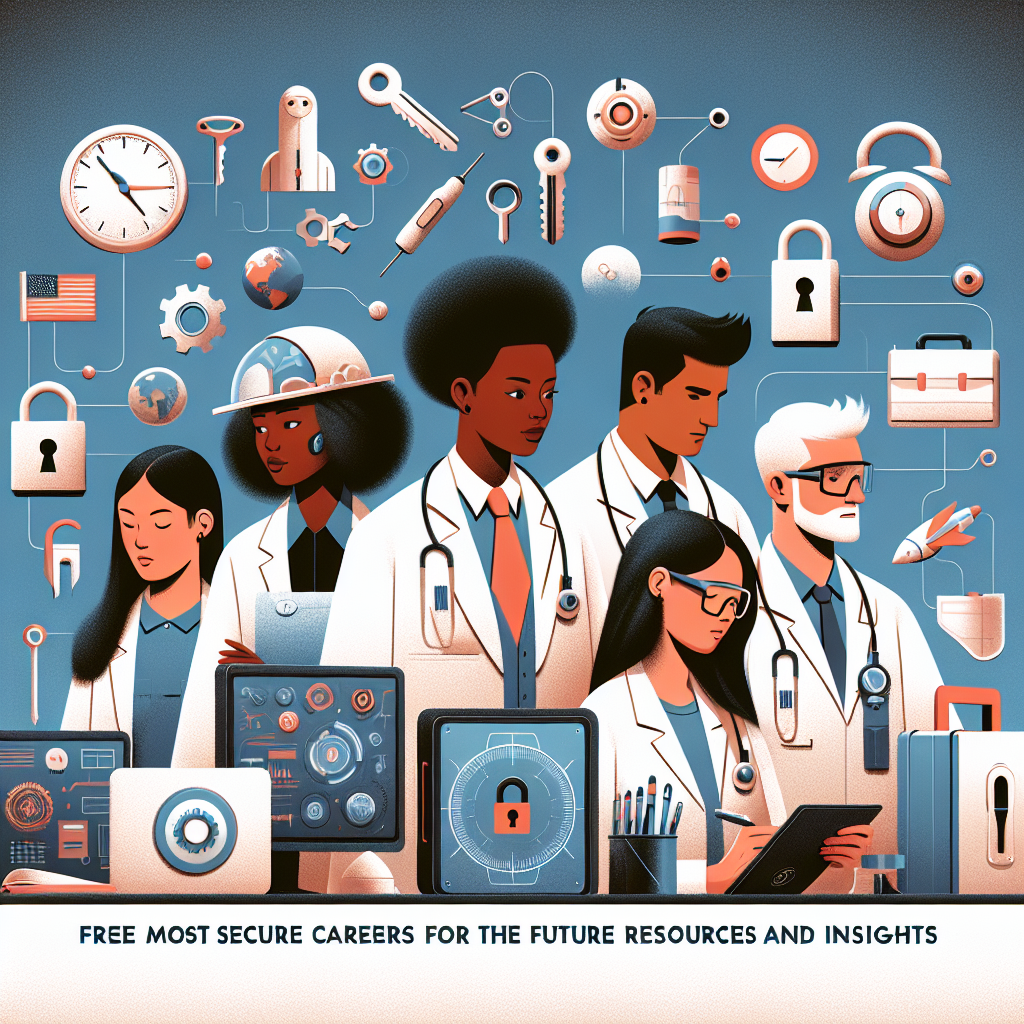Planning a stable professional future often starts with reliable information. Free Most Secure Careers For The Future Resources and Insights can help you identify resilient industries, transferable skills, and learning paths that strengthen long-term employability. This piece gathers practical advice, trusted data sources, and actionable steps to prepare for careers that are likely to remain in demand.
Why focus on future-proof careers
Economic cycles, automation, and demographic shifts change which jobs grow or shrink. Focusing on stable, high-demand fields reduces the risk of disruption and increases options for reskilling. Rather than chasing every trendy job, prioritize occupations with strong fundamentals: human-centered skills, technical complementarity to automation, or roles tied to essential public services.
Key indicators of a secure career
- Consistent or projected employment growth over the next decade
- Roles requiring complex human judgment, creativity, or interpersonal skills
- Occupations that support other growing industries (healthcare, education, cybersecurity)
- Clear pathways for certification, on-the-job training, or stackable credentials
Secure career categories to consider (close variant)
Below are broad sectors that often offer resilience and routes for upward mobility. Each category includes typical roles and practical starting points.
Healthcare and allied services
Healthcare remains one of the most durable sectors due to aging populations and ongoing care needs. Roles range from licensed practical nurses and medical technologists to health information specialists. Many positions offer certificate programs, apprenticeships, or associate degrees that shorten the time to employment.
Information technology and cybersecurity
Digital services and data protection are central to modern organizations. Cybersecurity analysts, cloud technicians, and software support specialists are in steady demand. Bootcamps, online certifications, and employer-sponsored training can help new entrants build credentials quickly.
Skilled trades and technical services
Electricians, HVAC technicians, and industrial maintenance workers power infrastructure and manufacturing. These jobs often combine apprenticeship models with clear wage progression and are less susceptible to offshoring.
Education and social services
Teachers, counselors, and community health workers provide essential human services that support community resilience. Credential paths vary by country and region, but many subfields offer shorter certificates or licensure alternatives for career changers.
How to evaluate resources and training
Not all free resources are equal. Here’s a quick checklist to assess training programs and guides:
- Is the provider reputable (universities, government agencies, recognized nonprofits)?
- Does the program map directly to a job title or industry-recognized credential?
- Are there outcomes available — placement rates, employer partners, or alumni testimonials?
For labor-market evidence on which occupations are growing fastest, consult authoritative analyses such as the BLS fastest-growing occupations table, which provides data-driven projections to inform career choices.
Practical steps to transition into a secure field
- Audit your transferable skills (project management, communication, technical aptitude).
- Pursue short-term credentials that employers recognize (certificates, microcredentials).
- Network into the field with informational interviews and volunteer projects.
- Test pathways via part-time study, internships, or contract work before committing full-time.
If you’re considering a midlife career change with tailored guidance, resources like Starting fresh: new career paths for women at 50 can provide focused advice and examples for later-stage transitions.
Free and trustworthy learning options
Many credible providers offer no-cost or low-cost learning that aligns with secure careers: community colleges, government workforce programs, university extension courses, and nonprofit training initiatives. Look for programs that offer mentorship, employer connections, or clear credit pathways.
Tips for finding free training
- Search community college continuing education catalogs for certificate programs.
- Check local workforce boards for subsidized training tied to employer demand.
- Explore MOOCs and verified tracks that offer skill-building before credentialing.
Short bulleted recap
- Prioritize durable sectors: healthcare, IT/cybersecurity, skilled trades, education.
- Use labor-market data to validate demand projections.
- Choose short, stackable credentials that lead to real jobs.
- Leverage free local and online resources, and test pathways with practical experience.
FAQ
Q: What makes a career “secure” for the future?
A: Security comes from sustained demand, difficulty to automate, and clear pathways for training and advancement. Jobs tied to essential services, human judgment, or specialized technical skills tend to be more resilient.
Q: Where can I find no-cost training that leads to real jobs?
A: Start with community colleges, government workforce agencies, and reputable online platforms. Look for programs that partner with employers or report placement outcomes to ensure training aligns with hiring needs.
Q: How quickly can I move into a future-proof field?
A: Timelines vary. Some certificate programs or bootcamps can prepare you in months, while professional licensure or degrees take longer. Combining part-time training with hands-on experience accelerates transition while reducing financial risk.



